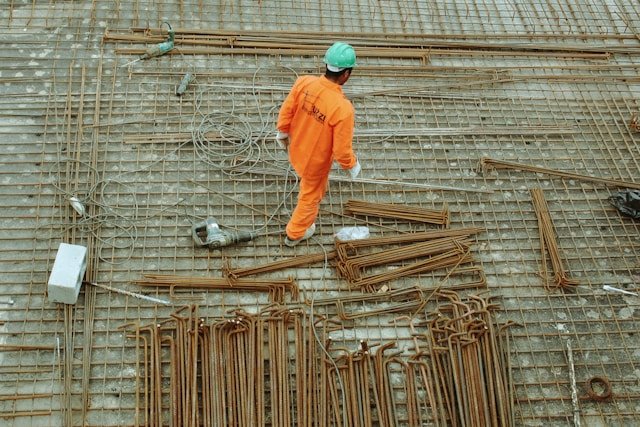The Role of Employees and Management In Hazard Identification and Risk Control

Introduction
Hazard identification and risk control are critical components of workplace operations. Active participation of employees and management in preventing accidents is essential for the smooth running of operations. With HIRA, unsafe conditions are reported, and safety protocols are adhered to. Management creates a safety-oriented culture and equips the workplace with effective control measures. With HIRA, the partnership of the management and employees promotes overall productivity and overall organisational well-being.
Read on to learn more about the benefits of Hazard Identification and Risk Assessment (HIRA) and who is responsible for conducting a hazard assessment.
Understanding HIRA (Hazard Identification and Risk Assessment)
Image Source
Hazard Identification
Hazard Identification occurs when teams examine a workplace and frame processes to uncover potential health hazards. Hazards vary according to organisations, but the primary goal is to detect every possible threat to ensure worker safety. A thorough inspection ensures that risks are addressed before they permanently disrupt operations.
Risk Assessment
Following hazard identification, risk assessment evaluates the identified risks by analysing their severity and likelihood. This step is crucial for developing effective safety measures. By understanding potential dangers, teams can implement strategies to protect workers, reduce incidents and foster a more productive environment.
ISO 45001 is a globally recognised international standard for Occupational Health and Safety Management System. The system provides a framework for employee safety and safer working conditions.
ISO 45001 aligns with ISO 9001 and ISO 14001 and is applicable to organizations from multiple sectors. The standard prioritises workplace security and specifies measures to prevent injuries and illnesses. Businesses can strengthen organisational resilience and focus on consistent improvement.
Who Is Responsible for Conducting a Hazard Assessment?
When answering who is responsible for conducting hazard assessment, it is essential to understand that the entire management team is assigned roles. However, the leadership can hire specialists for a thorough check.
- Consultants and Third-Party Assessors
Consultants and third-party assessors are hired to provide unbiased evaluations of workplace hazards. Specialised knowledge and an objective point of view help organisations identify risks that could be overlooked.
- Employers Identify Risks
Employers hold the primary responsibility for conducting hazard assessments under occupational health and safety laws. They identify potential hazards, implement controls and create a safe working environment. Regular inspections for risk evaluation help in addressing hazards effectively.
- Supervisors and Safety Officers
Supervisors and safety officers assess hazards and frame policies accordingly. Supervisors observe day-to-day operations and report issues consistently. Legal compliance with safety standards is ensured through proper inspection, which creates and maintains a culture of safety.
Importance of HIRA
Image Source
Here is how a business can benefit by creating a foolproof hazard identification and risk assessment system:
- Cultivating a Safety-First Mindset
A strong safety culture goes beyond compliance. A foolproof risk assessment and hazard identification system must be an integral part of a company’s identity. Employees at various levels are assigned roles to identify risks and improve consistently. Open communication and shared responsibility ensure that safety is embedded in routine operations.
- Boosts Morale and Improves Output
A safer working environment helps improve the morale of employees, which makes them work better. HIRA has a direct impact on their productivity, which improves their output. HIRA prioritised worker well-being, which includes better time management. Better teamwork and long-term organisational success ensure higher efficiency.
- Meeting Legal and Safety Standards
By adhering to occupational health and safety management guidelines, businesses can avoid penalties and fines. Compliance enhances the overall reputation of a company among its stakeholders and other regulatory bodies. Regular audits, training of employees and updated policies help companies perform responsible operations.
- Lower Operating Expenses
Effective safety programs help companies avoid costly accidents and lawsuits. With the latest hazard identification and risk assessment program, operations run smoothly even during a crisis. By preventing injuries and reducing turnover, companies spend less time on hiring and other medical expenses.
- Fewer Workplace Incidents
Implementing strong safety measures significantly lowers the number of workplace accidents. This protects the health of employees and the management team. Operational disruptions also reduce which encourages employees to follow safety protocols. With OHSMS, a more reliable workplace is created which improves employee efficiency.
Conclusion
Effective hazard management and timely risk assessment are the responsibility of employees and management. Employees contribute by observing, reporting and responding to potential dangers. Leadership can address those risks and ensure a smooth collaboration to minimise those risks by working with the management.
Frequently Asked Questions (FAQs)
Q. 1 What do you mean by OHSMS?
Answer 1: The Occupational Health and Safety Management System (OHSMS) is a set of processes that helps organisations manage risks related to workplace health and safety. Businesses can minimise hazards, improve employee well-being and enhance overall workplace safety.
Q. 2 Which ISO underlines requirements for OHSMS?
Answer 2: ISO 45001 is the international standard that outlines requirements for maintaining occupational health and safety management systems in a workplace. The aim is to reduce risks at the workplace, manage risks proactively and manage health and safety issues systematically.
Q. 3 What is a Quality Management System?
Answer 3: A quality management system or QMS is a framework of policies and procedures that improve employee productivity and maintain the standard of a company. The system aims to meet customer requirements and improve their satisfaction by managing their products and services effectively.
Q. 4 What are the benefits of OHSMS?
Answer 4: Benefits of OHSMS include reducing workplace accidents, improving legal compliance and boosting employee morale. Reduced costs associated with incidents and enhanced organisational reputation are other benefits of an occupational health and safety management system.
Q. 5 What does ISO 45001 stand for?
Answer 5: ISO 45001 is the international standard meant for maintaining occupational health and safety management systems. A systematic approach towards managing the health and safety of employees is ensured. A safe working environment is created with requirements outlined in the standard.
Q. 6 What are the 4 pillars of an occupational health and safety management system?
Answer 6: Framing a safety policy, making a safety risk management system, giving safety assurance and promoting safety proactively are the 4 main pillars of an occupational health and safety management system.




